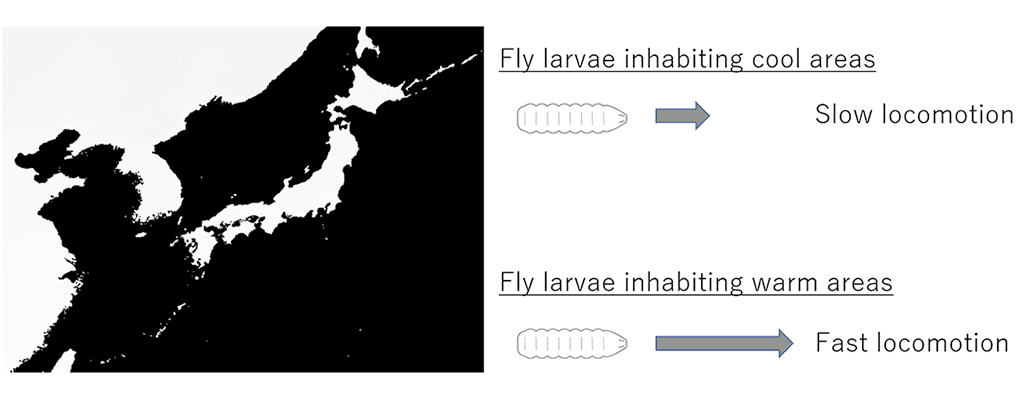The research group of Associate Professor Hiroshi Kohsaka, from the School of Informatics and Engineering, The University of Electro-Communications, and Professor Akinao Nose, from the Graduate School of Frontier Sciences, The University of Tokyo, found a correlation between the speed of fruit fly larvae from 11 species and the temperature of their respective habitats. Their findings were published in BMC Biology.
In the animal world, there are a myriad of patterns and speed of movement that can be observed. For instance, while cheetahs race at high speed across the savanna, tortoises stroll slowly on the grass, and jellyfish swim gently in the sea. This diversity is believed to have resulted from the adaptation of animals to different environments. However, many aspects of the quantitative relationship between this diversity of movement and of the environment remain unclear.
The group's study focused on larvae of the cosmopolitan genus Drosophila. Free movements of the larvae of 11 Drosophila species, including Drosophila melanogaster, were photographed under the same conditions, and their movement patterns were analyzed using machine vision, an image analysis method. Additionally, the temperature of the habitat of each Drosophila species was obtained by crossing distribution data with information from WorldClim, a global environment database. The relationship between larval movement and habitat temperature was then statistically analyzed.
The analysis showed that there were variations in the movement patterns between the 11 species. The speed of fly larval movement is traditionally considered to be related to the size of larvae. However, a detailed examination revealed no correlation between larval size and movement speed in Drosophila. Environmental temperature was, on the other hand, shown to be correlated with the speed of larval movements. Specifically, fly larvae living in cold regions moved slowly, while those living in warm regions moved fast.

Credit: The University of Electro-Communications
This relationship was observed only in Japan, and the larvae of the flies in Okinawa moved faster than those in Hokkaido. These results suggest that the diversity of animal movement patterns is related to global temperature variations. Drosophila larvae are useful model organisms whose motor control mechanisms have been investigated in detail, down to the level of their neural circuits. Further studies intend to explain the neural circuit diversification responsible for the phenomena described in this study to clarify the adaptive evolution of animal behavior at the molecular and cellular levels under the influence of the global environment.
Environmental and biodiversity problems are major issues for human populations worldwide. This study suggests that environment temperature is a factor that strongly affects the diversity of animal movements. Future studies should focus on a deep understanding of the relationship between the diversity of environments and animal behavior, to enable coordinated and quantitative analysis and the resolution of global environmental and biodiversity issues.
This article has been translated by JST with permission from The Science News Ltd.(https://sci-news.co.jp/). Unauthorized reproduction of the article and photographs is prohibited.




